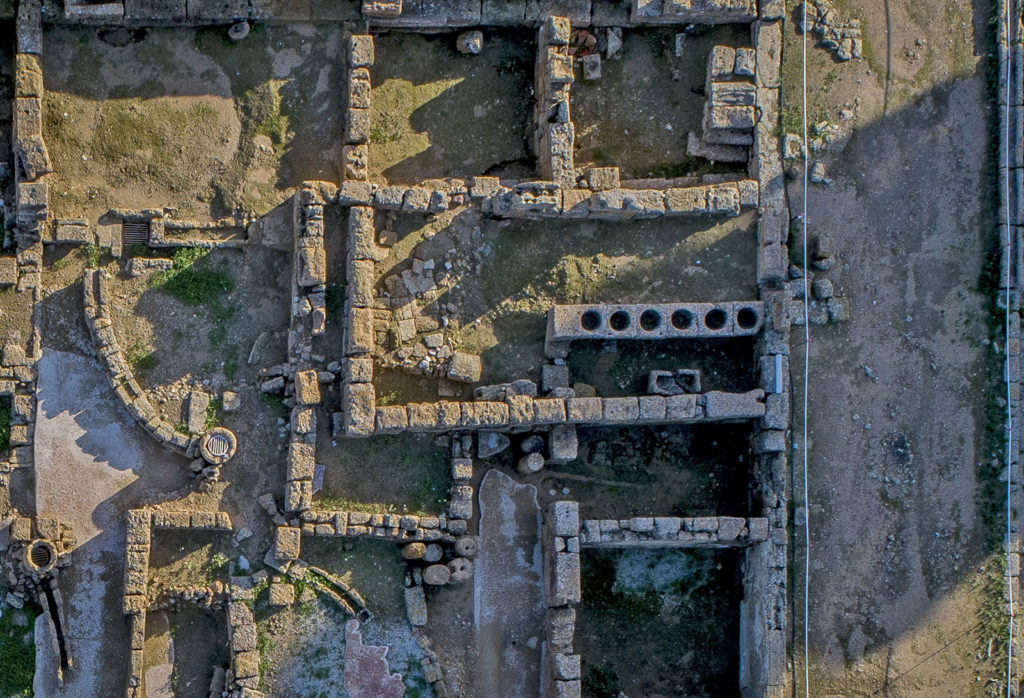In the Hellenistic-Roman quarter, as evidence of the trade that also took place in the city, workshops and spaces dedicated to production and trade were found, directly annexed to the domus: these rooms were located on the ground floor and opened directly onto the street, like real shops.
They might have overlooked the main arterial roads or secondary roads; in the former case they were generally larger in size, while the latter usually served as service rooms.
Insula II was the most eventful: an oil mill, called torcularium, and a tavern, probably
a taberna or caupona
, with an unusual counter equipped with large cavities to place the amphorae used for the sale of drinks were found.
 In addition, several lava stone
mills
In addition, several lava stone
mills
have been identified throughout the area, operated by slaves to grind
wheat
, which has always been cultivated in the Agrigentine fields.